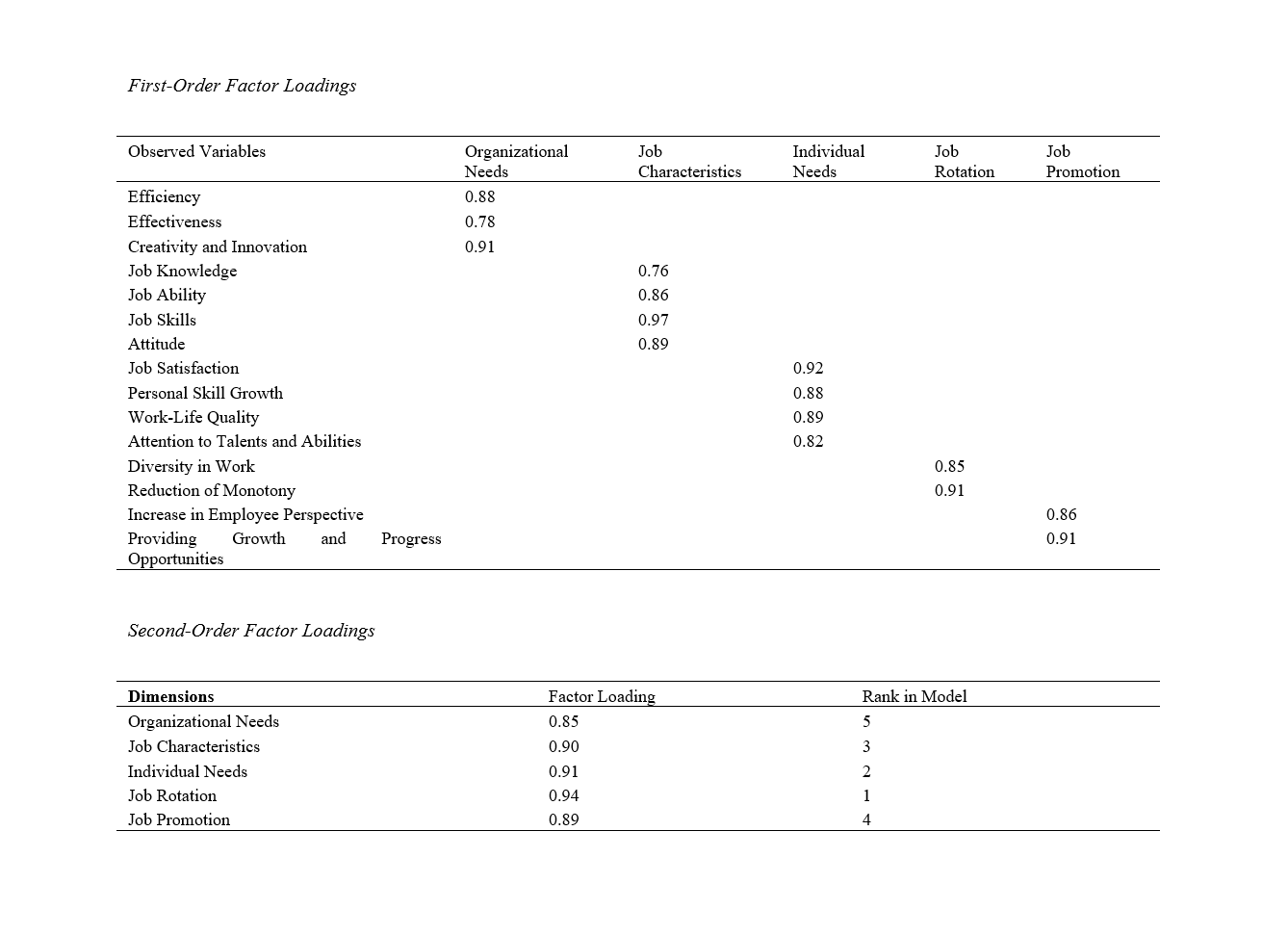Development of a Career Path Planning Model for Essential and Key Human Resources (Case Study: Saipa Automotive Group Companies)
Keywords:
Professional career path planning, Employee needs, Job rotation, Job promotion.Abstract
Objective: The importance of career path planning in organizations has increased and has been recognized across various domains. The aim of this research was to present a model for professional career path planning for essential and key human resources.
Methodology: The methodology of this research was quantitative-qualitative, employing a survey approach with a practical orientation. The study population consisted of managers and employees of Saipa automotive group companies. The data collected through questionnaires were analyzed using descriptive statistics for demographic characteristics and inferential statistics (single-sample t-test, paired t-test, confirmatory factor analysis, and structural equation modeling) in SPSS and LISREL software. The current status of the study population was evaluated using a one-sample t-test, and the significance of each indicator across the five dimensions was examined.
Findings: The results showed that individual needs, job rotation, job characteristics, job promotion, and organizational needs are of high importance in the current situation, respectively. Additionally, the results of the second-order factor analysis indicated that the dimensions of career path planning in terms of importance according to respondents are: 1- Job rotation with a factor load of 0.94, 2- Individual needs with a factor load of 0.91, 3- Job characteristics with a factor load of 0.90, 4- Job promotion with a factor load of 0.89, and 5- Organizational needs with a factor load of 0.85.
Conclusion: It can be concluded that job rotation and the needs of organization employees in professional career path planning are of significant importance, which warrants special attention.
Downloads

Downloads
Additional Files
Published
Submitted
Revised
Accepted
Issue
Section
License
Copyright (c) 2023 Amir Hossein Alizadeh (Author); Abolfazl Moghaddam (Corresponding Author); Fereshte Lotfizade, Arshad Farahmandian (Author)

This work is licensed under a Creative Commons Attribution-NonCommercial 4.0 International License.















